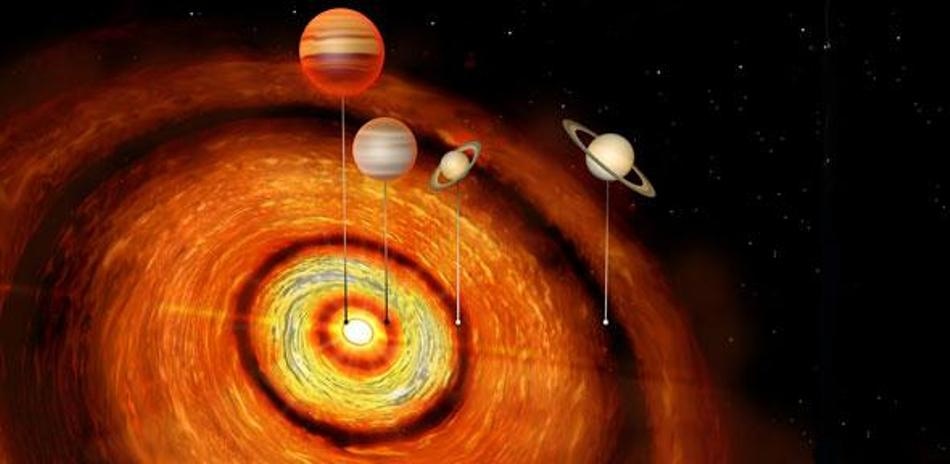Oct 16 2018
Scientists have identified a young star with four Jupiter- and Saturn-sized planets orbiting around it. This is the first time that detection of so many massive planets has been made in such a young system.
 Artist’s impression of CI Tau. (Image credit: Amanda Smith, Institute of Astronomy)
Artist’s impression of CI Tau. (Image credit: Amanda Smith, Institute of Astronomy)
A new record has been set by the system for the most extreme range of orbits observed to date: the outermost planet is located more than a thousand times farther from the star than the innermost planet, leading to interesting questions related to the formation of such a system.
The age of the star is just two million years, a “toddler” in astronomical terms, and is surrounded by a huge disk, known as a protoplanetary disk, of dust and ice.
This disk is the place where the moons, planets, asteroids, and other astronomical objects in stellar systems form.
The star was even earlier known to be exceptional since it contains the first so-called hot Jupiter—a massive planet that orbits very close to its parent star—to have been spotted around such a young star.
Despite the fact that hot Jupiters were the first exoplanets of their kind to be discovered, their existence has been mysterious to the astronomers as they are usually considered to be very close to their parent stars to have formed in situ.
At present, a group of researchers headed by the University of Cambridge have used the Atacama Large Millimeter/submillimeter Array (ALMA) to look out for planetary “siblings” to this infant hot Jupiter.
Their image showed that there were three distinct gaps in the disk, as stated by their theoretical modeling, most possibly due to three additional gas giant planets that also orbit the young star.
The outcomes of the study have been reported in The Astrophysical Journal Letters.
The star named CI Tau is located nearly 500 light years away in a highly productive stellar “nursery” region of the galaxy.
The orbits of its four planets are very different: the orbit of the closest (the hot Jupiter) is within the equivalent of Mercury’s orbit, whereas the farthest planet orbits at a distance over three times greater than that of Neptune.
The mass of the two outer planets is almost equal to that of Saturn and the mass of the two inner planets (respectively) is about 1 and 10 times that of Jupiter.
The discovery gives rise to various questions for astronomers.
Although nearly 1% of stars host hot Jupiters, the age of a majority of the familiar hot Jupiters is hundreds of times more than CI Tau.
It is currently impossible to say whether the extreme planetary architecture seen in CI Tau is common in hot Jupiter systems because the way that these sibling planets were detected—through their effect on the protoplanetary disc—would not work in older systems which no longer have a protoplanetary disc.”
Professor Cathie Clarke, First Author.
The scientists stated it is not evident whether the sibling planets had any role to play in driving the innermost planet into its ultra-close orbit and whether this is a mechanism behind the formation of hot Jupiters in general. Moreover, it is obscure how were the two outer planets formed.
Planet formation models tend to focus on being able to make the types of planets that have been observed already, so new discoveries don’t necessarily fit the models.
Saturn mass planets are supposed to form by first accumulating a solid core and then pulling in a layer of gas on top, but these processes are supposed to be very slow at large distances from the star. Most models will struggle to make planets of this mass at this distance."
Professor Cathie Clarke
The future challenge will be to analyze this mysterious system at several wavelengths to obtain more hints at the properties of the disk and its planets.
Meanwhile, ALMA (the first telescope with the potential to image planets in the making) could bring out more surprising elements related to other systems, thereby modifying our knowledge of the way planetary systems form.
The European Research Council supported the study.